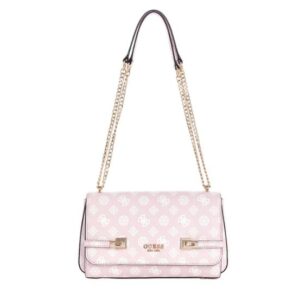Learning how to restore vintage handbags can give them a new lease on lugging your goodies around, increase their value and protect them for years to come.
Whether you’re interested in buying vintage bags or you just want to look after the ones you already own, read on to find the best refurbishing methods to do at home and when to enlist the help of a professional.
Exploring How To Restore Vintage Bags & Tips To Get Started
1. Get The Right Cleaning Products
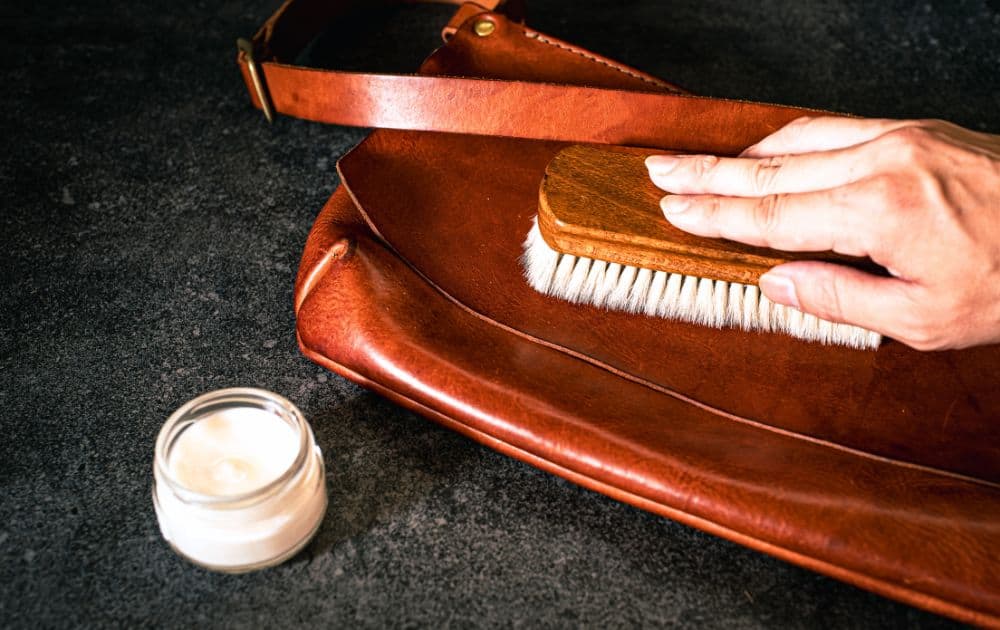
Before we talk about how to clean vintage bags, it’s crucial to have the right tools and products. The wrong ones can cause more damage than what you’re trying to fix. Make sure you choose products designed to clean the specific material of your leather, suede/Nubuck, or fabric handbag. The Handbag Clinic has an at-home handbag cleaning kit.
Always test your cleaning products on a small, unnoticeable corner of the bag to be on the safe side as you still never know if they will cause a reaction.
Avoid abrasive chemicals and cleaners and steer clear of these common methods that will end up causing more damage to your bag:
- Baby wipes contain various cleaning chemicals that can be too abrasive on pigmented leather, leading to color loss and water marks.
- Using abrasive chemicals such as vinegar and nail varnish remover is one of the most damaging misconceptions out there and leads to the pigmented color being drawn out of the leather.
- Dish soap can still result in watermarks and lines which require specialist treatment
- Putting a handbag in the washing machine is the surest way to ruin the shape and structure. It’s not even effective at drawing out the dirt or stains.
2. Remove Dirt From The Inside Of The Bag
Once you’re confident about using your chosen cleaning products on your bag, start by turning it inside out. Give it a good shake to dislodge any loose debris. A gentle vacuum with an upholstery nozzle can remove stubborn dirt.
If there’s any pilling, lie the lining as flat as you can on a smooth clean surface and lightly drag a razor—or better yet, a specialized fabric depilling device—over it.
3. Clean & Massage The Outside
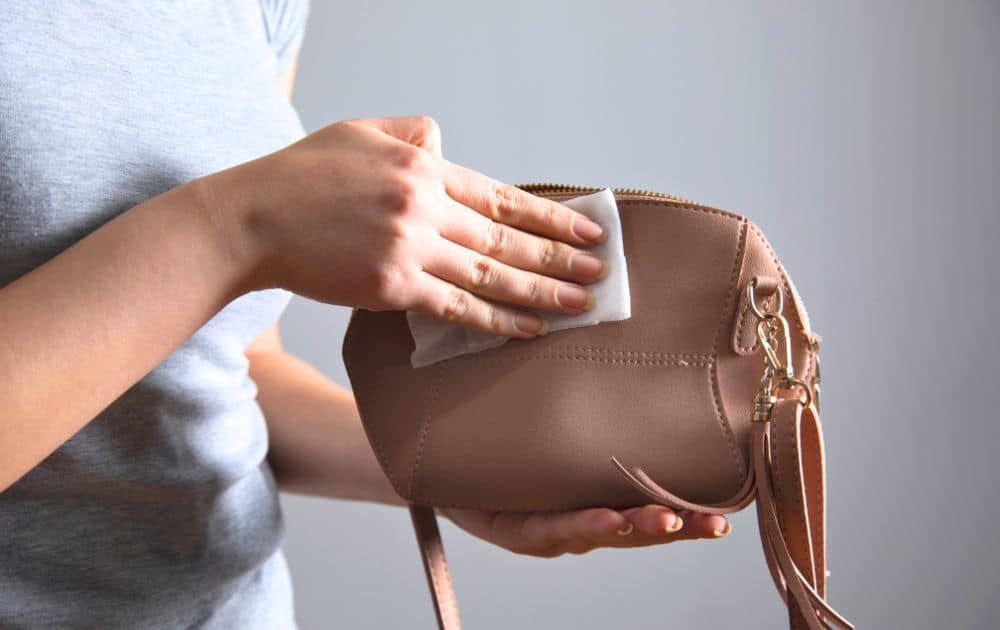
Start with one panel of your handbag and apply your leather, suede, or fabric cleaner onto the cloth provided. If you don’t have a cleaning kit, a soft-bristled horsehair brush or cloth and some Angelus Easy Cleaner does the job. It’s a shoe cleaner but it works on a range of fabrics including satin, canvas, leather, rubber, and linen.
Work up a lather and massage this into each panel of your bag in turn, using a circular motion. Be sure to spread the cleaner around with a cloth evenly to avoid water marks; it’s all about even distribution.
Work around the bag, concentrating on one panel at a time. You can do the same with the lining of the bag if you notice any dirt or scuff marks.
Repeat this process until the cloth you are using no longer shows any further dirt coming off the surface. Wipe down the bag evenly with a damp cloth to finish.
4. Condition The Leather
If your handbag is made from suede or leather, a leather conditioner can help restore its natural oils to keep it supple and protect the material. Leather CPR is a good general leather conditioner for your broom cupboard. You can gently massage it into the material using your hands or a cloth while the bag is still damp. For suede or nubuck, a specialist brush would be better.
The Handbag Clinic also has a leather protection cream which you might prefer to use instead. After the bag has been fully air-dried, add some cream to the sponge provided then apply it in a circular motion to each panel of the bag.
Pay special attention to worn or scuffed areas and make sure you work it into the seams to prevent wear later on.
Once absorbed, the cream creates a liquid-repellent barrier on the surface. If any accidents occur, like a spilled drink or uncapped pen, you will be able to wipe them off as it delays absorption.
Allow five minutes for the cream to dry. If you have a light-colored bag or if it’s a particularly absorbent leather you may want to repeat the process a couple of times.
5. Buff Out The Scratches
Examine your handbag for light scratches and scuffs. They can be buffed out with a leather wax polish and horsehair brush. Try not to use colored waxes and creams as they can cause discoloration. Pate De Luxe’s neutral shade polish is a safe bet for leather bag restoration.
Once the coat of polish has been applied, give the bag a final buff with a lint-free cloth. This will ensure a tight seal under the surface of the leather without leaving any residue on top.
It’s good practice to buff your leather bag every few months to maintain its glossy finish and keep scuffs at bay, but deep scratches and unbudgeable marks are best left to the professionals.
6. Polish The Clasps
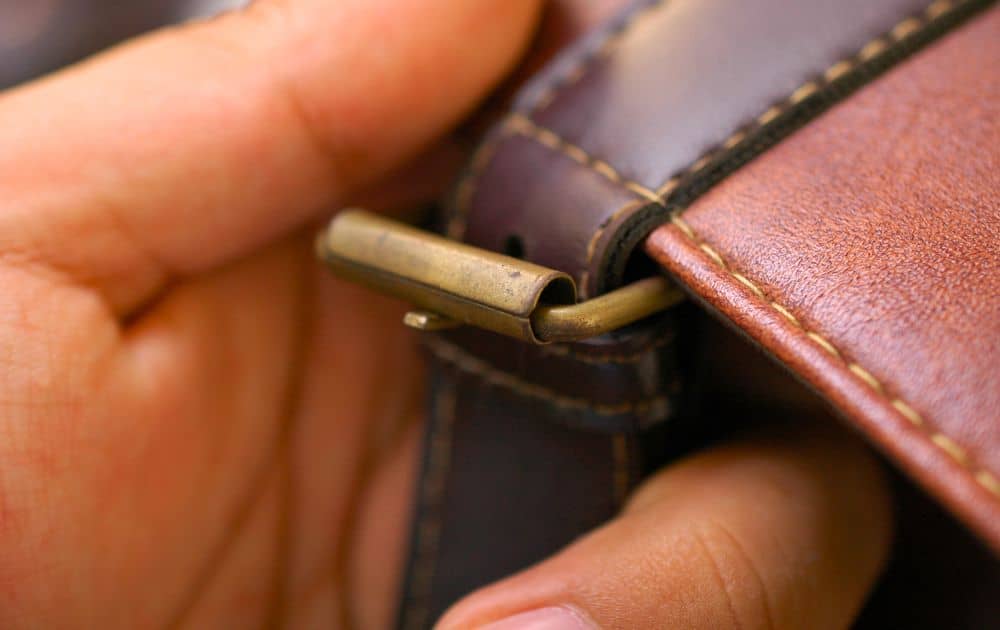



Don’t forget to give your bag’s buckles and clasps some tote-worthy TLC. Metal hardware can easily get scratched or grimy and sometimes green gunk can build up around studs which isn’t very luxurious.
You can restore it to its shiny luxe look with a metal polish and cloth. Delphis Eco Polish is a good product for this as it’s biodegradable, non-toxic, and free from solvents or phosphates.
Be careful to avoid getting the polish on other areas of the bag. If a cloth is too bulky for hard-to-reach areas, use a bamboo cotton swab to get in the cracks and along the edges. A toothpick can come in handy for scraping off any tough gunk. It’s one of the most satisfying parts of restoring old vintage designer handbags.
Depending on how grimy the hardware is, it might take a few goes with the polish—reconditioning used bags is all about persistence and patience, after all—or even professional replating for deeper damage.
7. Snip Loose Threads




Snip off any loose threads to about a few millimeters from the bag. Take a lighter and carefully touch the remaining loose thread to the flame. Since they’re made from polyester, the threads melt rather than burn, allowing them to seal and prevent the stitching from unravelling further.
The process is quick and won’t damage the rest of your bag. If you’re worried about holding an open flame to your precious designer accessories, a refurbishing expert will be able to help.
8. Stuff & Store Your Bag The Right Way




Once you’ve done the hard work, you’ll want to keep your bags in good condition for as long as possible.
Whennot in use, stuff your bag with acid-free tissue paper (which won’t stain the lining like newspaper), an old shirt, or even an old pillow for larger bags to help it keep its structure. Whatever you choose to use, opt for natural fibers like non-colored cotton as it’s breathable and absorbs moisture away from the bag.
Keep your bag’s dust bag (or buy an organic cotton dust bag) and keep it in there to prevent dye contamination or damage from sunlight or other garments.
Store it somewhere cool and dry like your closet. High temperatures can make waxed edges tacky and moisture causes the leather to break down—leading to bad odors, mildew, water stains and brittle materials. If your home is prone to humidity, put a dehumidifier in your closet to keep your leather accessories and handbags safe from encroaching dampness.
9. Get The Help Of A Professional
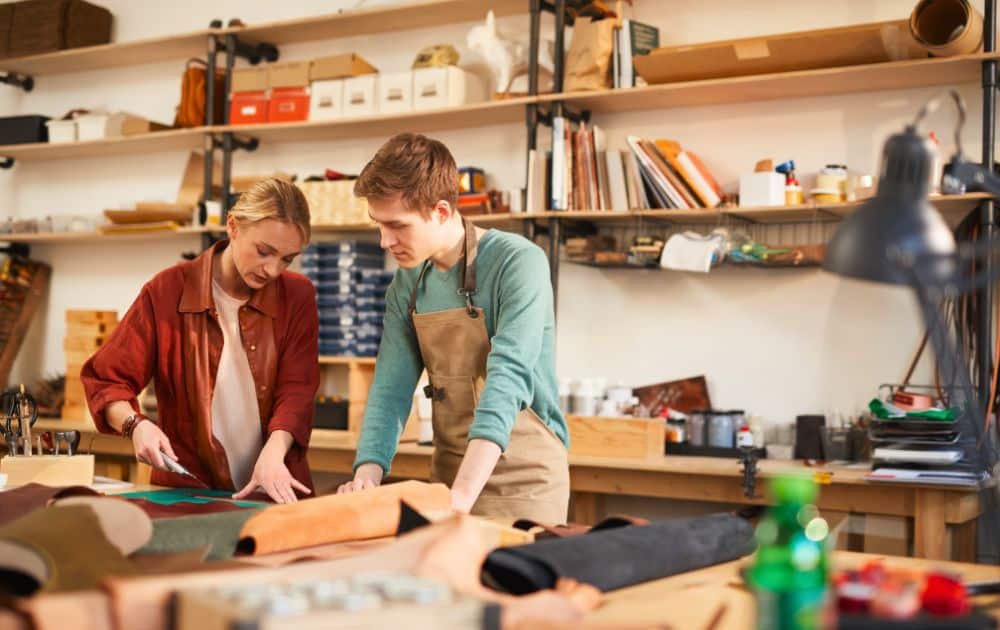



The tips above can help you revive and restore designer bags to their former glory, but what do you do if there are tears in the lining, broken handles, or unravelling embroidery?
The best course of action is to enlist the help of a professional. Expert vintage bag restoration can perform miracles and add hundreds and even thousands of pounds to the value of your designer bag.
In the US, Cobblers Direct can refurbish both vintage handbags and shoes. Nine out of ten times, they can even fix purses that have been chewed by your dog.
The Handbag Clinic offers luxury handbag restoration services in the UK. They can do hardware repairs, fix up tired materials or change the color for a bespoke new look.
The Seam matches you to specialist artisans in your local area who can fix zips, replace the lining, shorten straps, restore beadwork and embellishments, and give your bag a deep clean.
Closing Thoughts On Restoring Designer Bags
Restored vintage handbags are much more sustainable than buying new—especially considering leather production alone is linked to deforestation, greenhouse gas emissions, animal rights abuses, and carcinogenic chemicals.
Learning the basics of how to clean vintage handbags is one of the easiest ways to give your battered old bags a fresh, fashionable look and prolong their lifespan.
Be sure that all your sustainable luxury brand loving friends—or just those with a major bag addiction—have these tips in the bag, too, by passing this article along.




